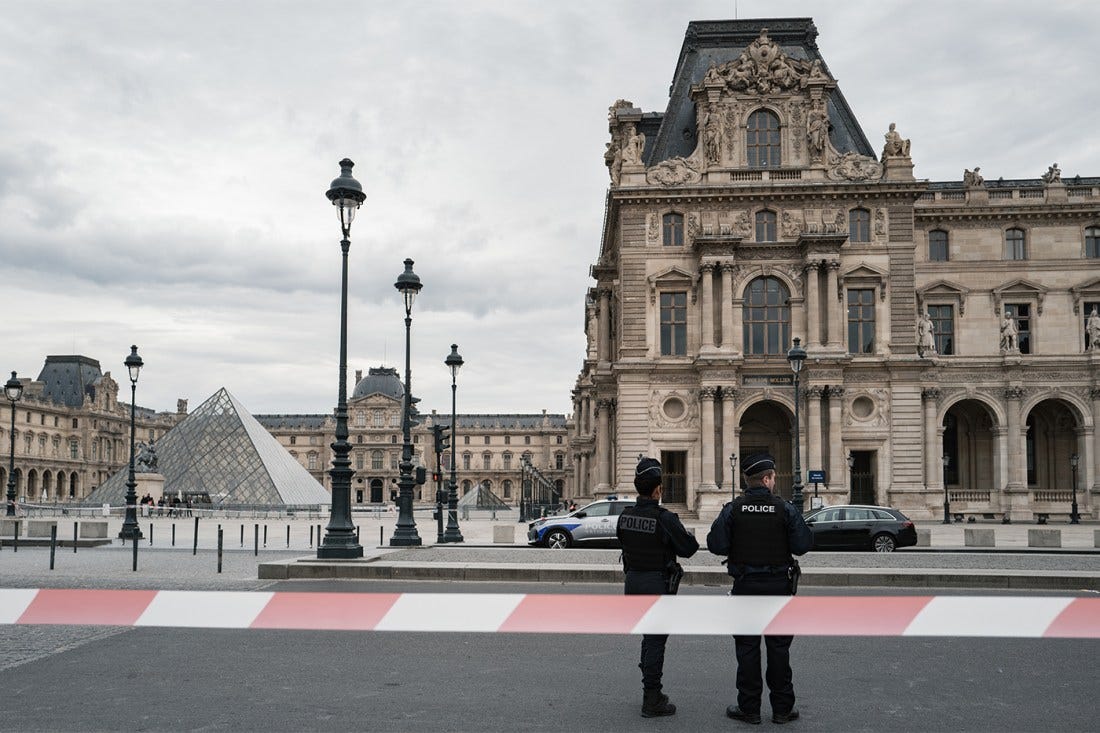The Broken Vault
How Cultural Treasures Become Casualties of a Fragile World?
The recent Louvre jewel heist is more than a simple crime; it is a potent symbol of our era’s profound fragility. This article explores how societal forces erode the very foundations of shared heritage, challenging our illusions of security and the sanctity of cultural institutions.
When Illusions Shatter: The Theft as Metaphor
When you hear about a brazen daylight theft from a place like the Louvre, your immediate thought might be, ‘How could that even happen?’ But for me, it immediately struck a deeper chord. The recent heist of France’s crown jewels isn’t just a news story about a crime; it feels like a punch to the gut of our collective sense of security and, more importantly, our shared cultural heritage. This seemingly impossible act of theft becomes a vivid metaphor for how fragile our most cherished institutions and historical artifacts truly are in this modern world. It forces you to question the very idea of permanence and safety for things we assume are beyond harm.
Think about it: the Louvre represents centuries of human endeavor, artistry, and memory. It’s supposed to be a sanctuary, a stronghold for the past. Yet, as we’ve seen, even its grandiosity and supposed impregnability can be compromised. This isn’t just about stolen objects; it’s about the shattering of an illusion. We want to believe that certain things—our history, our art, our shared stories—are safe, guarded by their inherent value and formidable defenses. But this event makes it painfully clear that those defenses, whether physical or societal, are only as strong as the collective reverence and care we invest in them. And lately, it feels like that investment is dwindling.
The Invisible Plunder: Forces Eroding Shared Heritage
I believe this incident points to something far more systemic than just clever criminals. We’re seeing an ‘invisible plunder’ of culture driven by powerful forces. Economic inequality, for instance, can breed a desperation that transforms priceless heritage into mere commodities for illicit markets. It’s a tragic cycle where value is distorted for immediate gain. And then there’s technology – the very thing that connects us globally also creates new avenues for this kind of crime. Digital networks can facilitate shadowy transactions and offer anonymity that makes recovery incredibly difficult. It’s a double-edged sword: unprecedented access to information, yes, but also unprecedented vulnerability to those who seek to exploit it.
“The more technologically advanced we become, the more vulnerable our most human creations seem to be.”
– Yuval Noah Harari (paraphrased)
What’s truly troubling is how a society, in its relentless pursuit of progress and instant gratification, can subtly lose its connection to history. We’re bombarded with the new, and the old often gets pushed aside. This subtle detachment can lead to a kind of historical amnesia, where the significance of ancient artifacts and the lessons they hold start to fade. The audaciousness of the Louvre theft is not an isolated incident but a powerful symptom of a larger, systemic erosion of respect for our shared human achievements. It’s a wake-up call to recognize how our modern priorities might inadvertently be making us complicit in the slow, unseen destruction of our cultural legacy. If we don’t actively protect it, who will?
Go Deeper
Step beyond the surface. Unlock The Third Citizen’s full library of deep guides and frameworks — now with 10% off the annual plan for new members.
Reclaiming Our Cultural Future: Beyond the Illusion of Security
So, what does this mean for us? For me, it means we have to look beyond just adding more alarms and security cameras. The real implications of such a theft are existential: if our most guarded treasures are vulnerable, what does that say about the state of our collective memory and our ability to pass down wisdom? We need a fundamental shift in our societal values, recognizing that the true security of cultural heritage comes from a deep, collective commitment to its intrinsic worth.
“We do not inherit the earth from our ancestors; we borrow it from our children.”
– Native American Proverb
This isn’t about blaming anyone; it’s about understanding and responding. It’s about moving past the illusion of impenetrable vaults and understanding that genuine preservation demands active participation. We need robust education in history and art, not just for academics, but for everyone. We need global collaboration that transcends national borders, because these treasures belong to all humanity. By truly valuing our past, by seeing it not as a static collection but as a living narrative, we can begin to fortify it, not just with physical defenses, but with the moral authority of a society that understands the urgent importance of its own story. This is how we protect not just jewels, but the very soul of our civilization.



